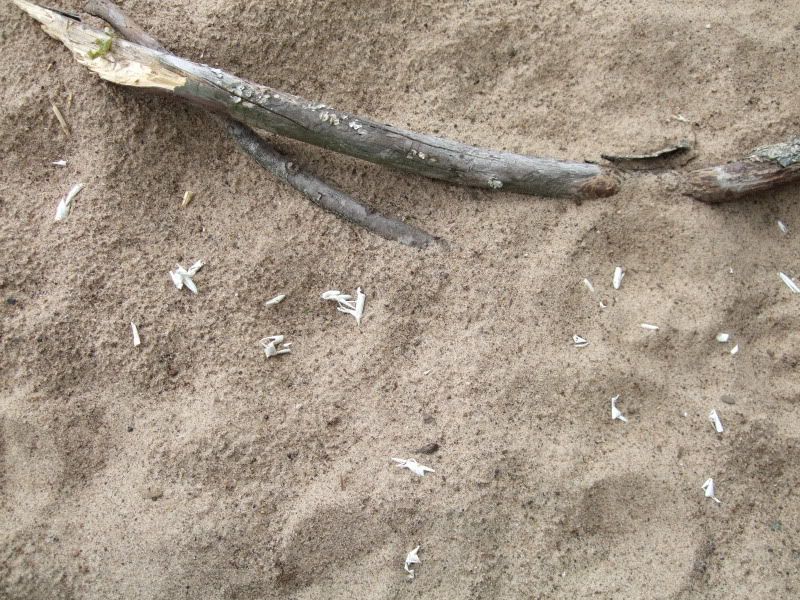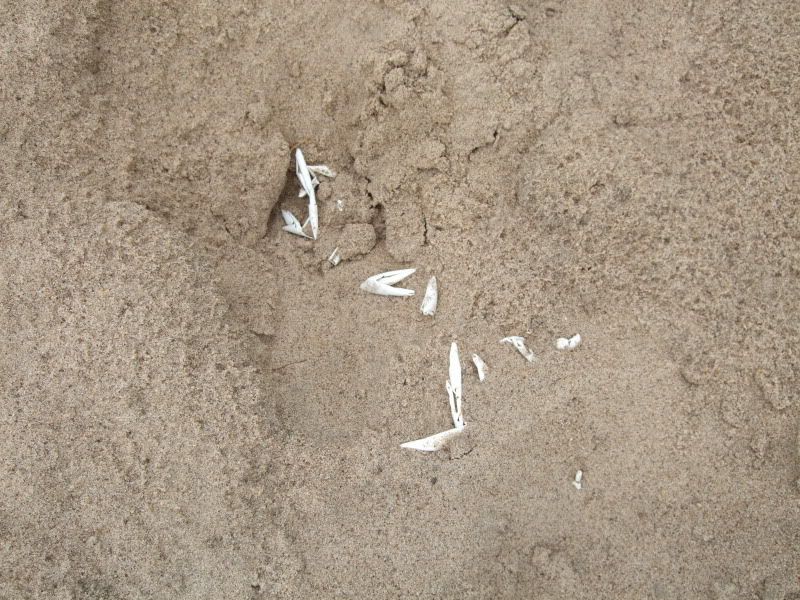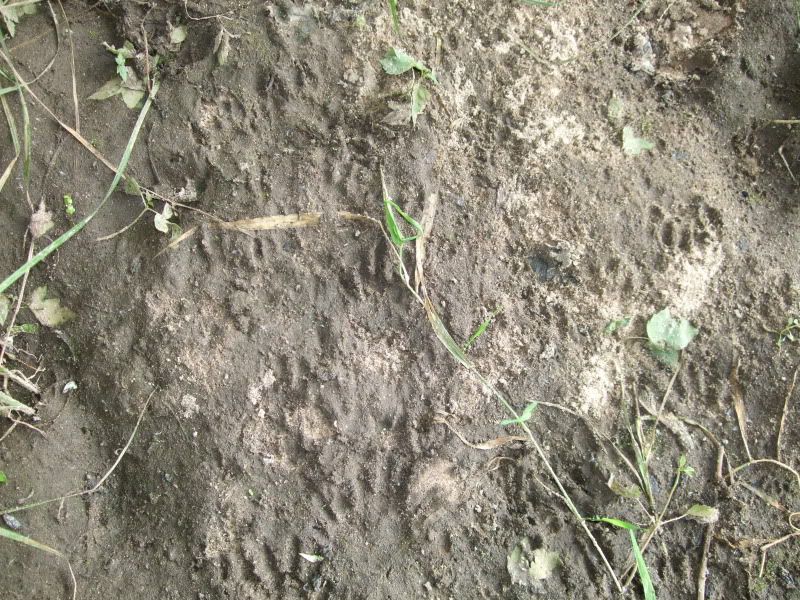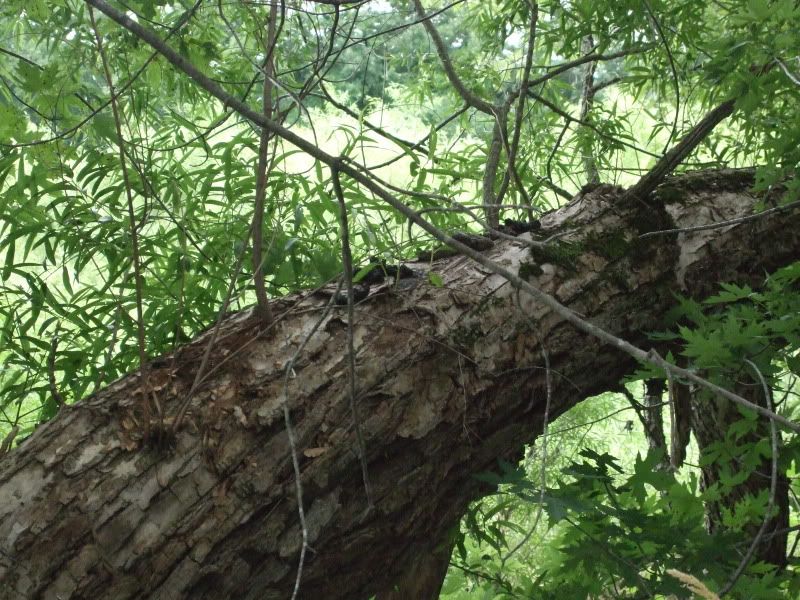|
|
Post by mustelameister on Jul 12, 2011 19:25:12 GMT -6
'Coon tracks everywhere on the river. Bandits are swimming up to a hundred yards to get to a high sandbar where the turtles have been laying eggs.   Trail narrows a bit heading up to the lush undergrowth on the island. Wonder where they're headed?  Ah yes . . . after feasting on turtle eggs one must relieve one's self!  Now if a fella could get a turtle egg under a DP trigger . . . .  |
|
|
|
Post by RdFx on Jul 12, 2011 20:32:39 GMT -6
Muskrat im finding same thing, i can't for the life of me figure how ANY turtle eggs get to hatch and if any do how they survive as when small the size of quarter everything munches on them including birds... When you see a snapper with a shell 21 inches across you can really call him a survivor with 50 plus years
|
|
|
|
Post by garman on Jul 13, 2011 8:00:19 GMT -6
Muskrat im finding same thing, i can't for the life of me figure how ANY turtle eggs get to hatch and if any do how they survive as when small the size of quarter everything munches on them including birds... When you see a snapper with a shell 21 inches across you can really call him a survivor with 50 plus years I agree, but I would rather call him supper!  |
|
|
|
Post by Stef on Jul 13, 2011 9:52:49 GMT -6
Push or pull trigger?  |
|
|
|
Post by makete on Jul 17, 2011 9:33:52 GMT -6
Was Grandpa mad that all his paint dried out? LOL.
|
|
|
|
Post by trappnman on Jul 17, 2011 10:12:58 GMT -6
lee- my father in law raised a bunch in his gardern. I doubt he did the following, must have just gotten lucky!
Ive heard they are hard to bring to hatching, and found this:
1
Prepare a basket for the eggs. Mix equal parts potting soil and peat moss, making sure you have enough to fill the basket. Fill it ¾ of the way and set the remaining peat and dirt mix aside.
2
Put on the gloves and brush the dirt from the top of the eggs. Do not move them yet; reptile embryos attach to the top of their eggshells. Turning the eggs will kill the snapping turtles.
3
Mark the top of each egg with the marker. Make something large and visible. Gently pick up each egg, keeping the ink mark facing up, and place it in the basket.
4
Sprinkle the peat and dirt mix around and over the eggs; do not pack the dirt as this will suffocate the eggs. Layer the peat and soil about a ½ an inch around the eggs, leaving a little of the top shell exposed.
5
Place the basket in a safe place where it will not be jarred. Keep the temperature in the room no lower than 75 degrees Fahrenheit and no higher than 85 degrees. The eggs will take 50 to 100 days to hatch.
|
|
|
|
Post by mustelameister on Jul 17, 2011 10:42:33 GMT -6
interesting, Steve
|
|
|
|
Post by RdFx on Jul 17, 2011 13:07:46 GMT -6
one would think eggs would dry out , not being covered. Suppose one could mist them once in awhile. I just put in sand in five gallon pail with holes in bottom and screen on top... Let them hatch and return to wild. This at least gives baby turtles a chance to hatch and then compete with nature.
|
|
|
|
Post by MRussell on Aug 24, 2011 23:51:51 GMT -6
I watched several groups of crows walking through the Thompson Point Housing yard at SIUC flat out decimating the turtle clutches. The turtles would come out of the lake and build their nest . The crows would fly down and look for bare spots and start pounding their beaks into the soft spot until they got at the eggs. They would swallow them whole. They ate a lot of eggs.
|
|
|
|
Post by musher on Aug 25, 2011 4:55:19 GMT -6
How big is a turtle egg?
|
|
|
|
Post by jim on Aug 25, 2011 6:08:13 GMT -6
The eggs are about 1" in diameter. Jim
|
|
|
|
Post by bankrunner on Aug 25, 2011 17:59:08 GMT -6
Look like a ping pong ball.
|
|
|
|
Post by musher on Aug 25, 2011 18:12:15 GMT -6
Thanks! I've seen maybe 3 wild turtles in my life. Two of which were in my yard.
|
|